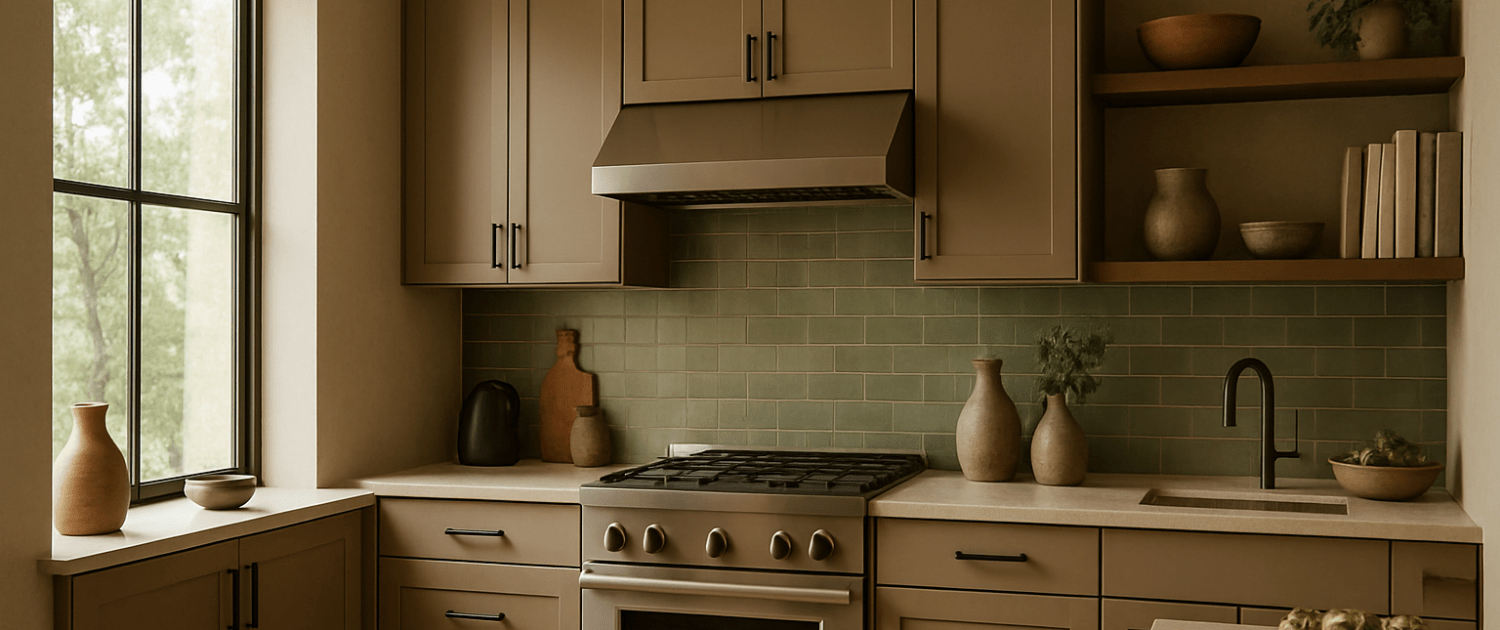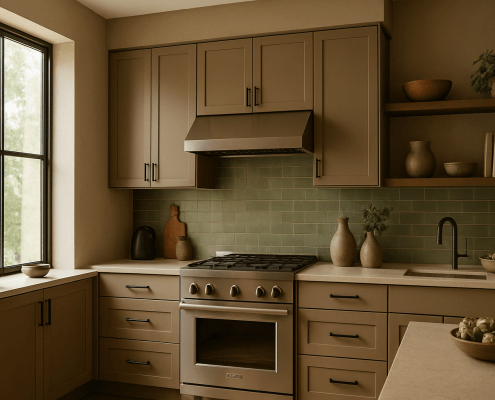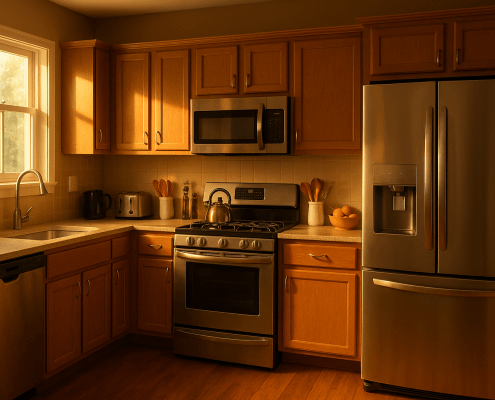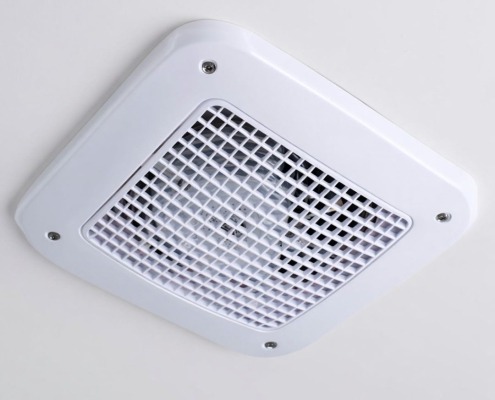How to Vent Your Gas Appliances Properly and Why It Matters
Steven E / Monday July 14, 2025
When it comes to your gas appliances, good venting isn’t just a nice-to-have; it’s a must. Proper ventilation keeps your appliances efficient, protects your indoor air quality, and most importantly, helps prevent dangerous carbon monoxide buildup. Here’s how to vent your gas appliances properly and why it matters for your home and your family’s safety.
Why Proper Venting Matters
Every gas appliance that burns fuel produces exhaust. That exhaust contains carbon dioxide, water vapor, heat, and trace amounts of carbon monoxide and other combustion byproducts. Proper venting ensures all those gases are safely expelled outdoors where they belong.
When venting is done right, you get:
- Clean, efficient combustion that maximizes heat and minimizes fuel waste
- Safe removal of harmful gases so they don’t build up inside
- Longer-lasting appliances that aren’t stressed by heat or moisture buildup
- Peace of mind knowing your home is safer and healthier
When venting is done poorly or not maintained, you can end up with:
- Carbon monoxide leaks
- Moisture damage to walls, ceilings, and ducts
- Rust, corrosion, and soot inside your appliances
- Reduced performance and higher energy bills
Proper venting is as much about safety as it is about keeping your home comfortable.
How Gas Appliance Venting Works
Venting is essentially about creating a clear path for hot combustion gases to flow from the appliance to the outdoors. It also helps draw fresh air into the burner for clean combustion.
Here are the most common venting systems you’ll find in homes:
- Natural Draft (Atmospheric Venting): Many older furnaces and water heaters use this system. Hot exhaust gases rise naturally through a vertical metal flue pipe (or chimney) and exit through a vent hood on your roof.
- Direct Vent: This system uses two pipes: one brings fresh outdoor air to the appliance, and the other exhausts combustion gases outside. It’s a sealed system, making it more efficient and safer.
- Power Vent: Some appliances use a small fan to actively push exhaust gases outside through horizontal or vertical pipes. Power venting allows more flexibility in where the appliance can be installed.
- Vent-Free: Some gas fireplaces and space heaters are designed to burn very cleanly and don’t vent outdoors. These require very careful monitoring and are usually limited to specific uses.
No matter what system your appliance uses, the goal is the same: to remove harmful gases completely and allow proper air intake for clean burning.
Common Venting Problems
Over time, your venting system can develop issues. Being able to recognize and address them early helps prevent bigger problems down the line.
- Blocked Vents: Bird nests, leaves, lint, or even snow can block vent pipes. Blockages restrict airflow, which can cause exhaust gases to back up into your home.
- Disconnected or Damaged Pipes: Vibration, corrosion, or improper installation can cause pipes to loosen, shift, or break, letting gases leak into your home.
- Rust and Corrosion: Moisture in exhaust gases can condense and cause metal vent pipes to rust. Corroded pipes are weaker, leak more, and can even collapse.
- Improper Slope: Horizontal vent pipes need a slight upward slope to let gases flow out. Pipes that sag or run level can trap moisture and gases.
- Poor Sealing: Joints between vent pipes must be tightly sealed. Gaps or loose connections can leak hot gases and moisture.
How to Inspect Your Venting
You can learn a lot just by taking a close look at your vent pipes and chimneys.
- Follow the vent pipe from the appliance to where it exits the home. Look for gaps, disconnected sections, or crushed areas.
- Shine a flashlight inside the vent hood outside and check for debris or nests.
- Feel around joints for any escaping warm air while the appliance is running.
- Check for rust stains, moisture marks, or black soot around vent connections and on nearby walls or ceilings.
- Watch the burner flame while the appliance is running. A steady blue flame usually means good venting. Yellow or flickering flames suggest poor airflow.
Fixes and Maintenance for Better Venting
Many common venting problems can be fixed with basic tools and a little time.
Clean Blocked Vents
- Use a long brush or a shop vacuum to remove lint from dryer ducts.
- Clear leaves, nests, or snow from vent hoods.
- If your chimney is blocked, remove the obstruction from the top if you can safely access it.
Reseal Loose Joints
- Tighten clamps or screws at vent connections.
- Use high-temperature foil tape to seal gaps (never regular duct tape).
Replace Damaged Sections
- Swap out corroded, crushed, or poorly fitted vent pipes with new sections of the correct size and material.
Adjust Slope
- If horizontal vent pipes sag, add support brackets to create a proper upward slope of at least 1/4 inch per foot.
Replace Worn Gaskets
- Many appliances have gaskets where the vent connects to the unit. Replace cracked or worn gaskets to maintain a tight seal.
Best Practices for Safe Venting
Along with fixing problems as they come up, there are a few habits that help keep your venting safe and effective year-round:
- Check vents and chimneys at least once a year, especially before heating season.
- Keep flammable materials away from vents and exhaust pipes.
- Make sure vent terminations outdoors are clear of shrubs, fences, or other obstructions.
- Test your carbon monoxide detectors monthly and replace batteries yearly.
- If you renovate or change appliances, double-check that vent pipes are still properly sized and connected.
Common Questions
Why is vent slope important?
Hot gases rise naturally, but horizontal sections of vent pipe rely on a slight slope to let water vapor drain and gases flow. Without the slope, water can pool and block airflow.
Can I use plastic vent pipes?
Some modern high-efficiency appliances are designed for PVC or CPVC venting. Standard metal-vented appliances should never be vented with plastic pipes.
How do I know if my vent is blocked?
Signs include unusual smells, soot on walls or ceilings near the appliance, condensation, longer run times, and yellow burner flames.
Do all gas appliances need to vent?
Most do. Vent-free appliances are an exception, but they’re designed for specific use cases and have strict installation limits. Always check your appliance’s requirements.
Where To Find Us
If you need any replacement parts for your appliances, you can enter your model number at AppliancePartsPros.com to locate and order them quickly. Most orders arrive in just two business days, and we have tons of great information in our repair help section and YouTube videos to help you troubleshoot.
Stay connected with the latest DIY tips, tutorial videos, and repair guides by following us on Facebook, Instagram, and Twitter. We love hearing about your repair stories and successes. If you need more help or want personalized guidance, feel free to reach out. We’re ready to help you take on your next project with confidence!
The information in this article may not apply to your specific appliance model. We recommend consulting your manufacturer’s documentation or contact us with any questions.
With nearly a decade of experience in providing top-notch customer service regarding appliance parts and repair, Steven enjoys sharing practical advice, troubleshooting tips, and interesting information to help readers stay informed.





